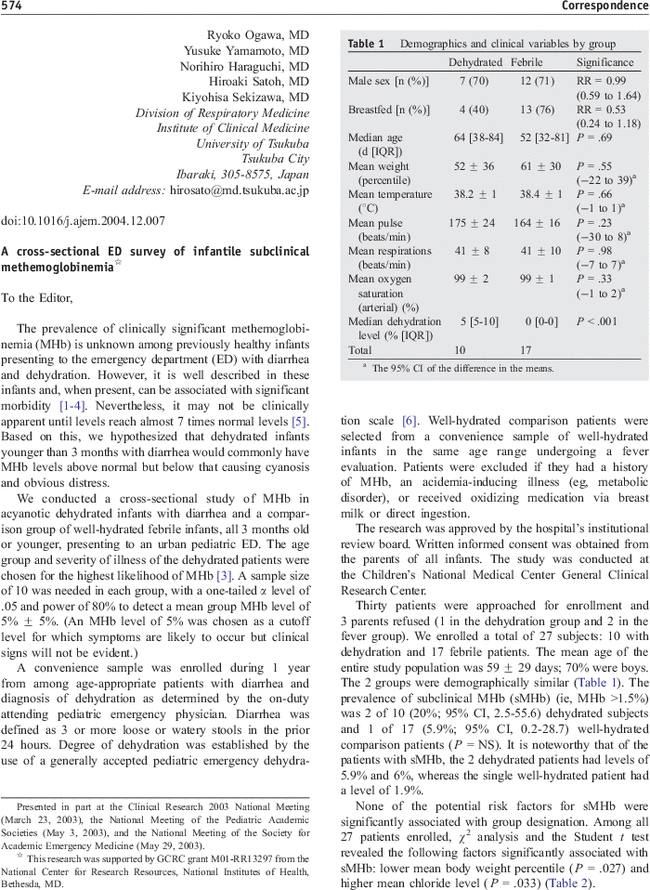A cross-sectional ED survey of infantile subclinical methemoglobinemia☆
To view the full text, please login as a subscribed user or purchase a subscription. Click here to view the full text on ScienceDirect.

To access this article, please choose from the options below
Purchase access to this article
Claim Access
If you are a current subscriber with Society Membership or an Account Number, claim your access now.
Subscribe to this title
Purchase a subscription to gain access to this and all other articles in this journal.
Institutional Access
Visit ScienceDirect to see if you have access via your institution.
Presented in part at the Clinical Research 2003 National Meeting (March 23, 2003), the National Meeting of the Pediatric Academic Societies (May 3, 2003), and the National Meeting of the Society for Academic Emergency Medicine (May 29, 2003).
☆This research was supported by GCRC grant M01-RR13297 from the National Center for Research Resources, National Institutes of Health, Bethesda, MD.
Article Tools
Related Articles
Searching for related articles..


